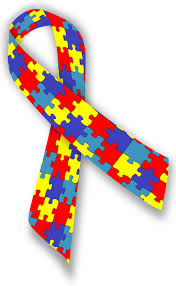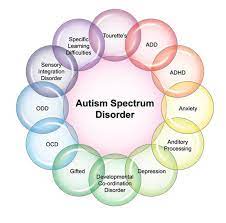
Understanding Autism: Key Facts and Overview
Autism, a multifaceted spectrum affecting countless individuals worldwide, is often shrouded in misconceptions. While the term “autism” evokes various images and assumptions, it’s crucial to understand its vast diversity. This introductory exploration aims to shed light on the intricacies of autism, debunking prevalent myths and emphasizing the unique experiences and strengths of those on the spectrum.

Autism Spectrum Disorder (ASD) is a complex and diverse condition that affects millions of people worldwide. Unfortunately, due to the wide range of presentations and misconceptions about autism, there is a need for greater understanding and awareness. In this post, we will discuss what everyone should know about autism, and along the way, we’ll debunk some common myths.
Myth 1: All ASD Individuals are Alike
One of the most prevalent myths is that all autistic individuals exhibit the same characteristics or behaviors. In reality, autism is a spectrum, and no two individuals with autism are identical. Some may have exceptional intellectual abilities, while others may struggle with speech or daily living skills. Understanding this diversity is essential to supporting and accepting those with autism.
**Myth 2: ASD is Caused by Vaccinations**
This myth has been thoroughly debunked by extensive scientific research. There is no credible evidence linking vaccinations to the development of autism. Autism has a strong genetic component and likely begins before birth. It’s not caused by vaccines.
Myth 3: Autistic Individuals Lack Empathy
This myth is far from the truth. Autistic individuals often experience and express empathy differently. While they may have difficulty with social cues and non-verbal communication, it doesn’t mean they lack empathy. Many autistic individuals care deeply about others’ feelings and well-being.
Myth 4: ASD is a Childhood Disorder
Autism is a lifelong condition, not something that disappears in adulthood. However, with appropriate support, many autistic individuals can lead fulfilling and independent lives. ASD doesn’t “go away,” but people with autism can learn strategies to adapt to their environment.
Myth 5: Autistic People are All Savants
Savant syndrome, where an individual possesses extraordinary skills in a particular area, is relatively rare and not a characteristic of all autistic people. While some autistic individuals may have unique talents, most do not possess savant abilities. ASD is a wide-ranging spectrum, and strengths and challenges vary widely.
Myth 6: Autistic Individuals Don’t Want Social Interaction
It’s a misconception to assume that all autistic people prefer isolation. Many desire social connections, but they might struggle with the nuances of social interaction. Social difficulties do not equate to a lack of desire for companionship or friendships.
Myth 7: ASD is a Mental Illness
Autism is a neurodevelopmental condition, not a mental illness. While individuals with autism may have co-occurring conditions like anxiety or depression, autism itself is not a mental illness. It’s a different way of experiencing the world, not a psychiatric disorder.
Myth 8: ASD is Over-Diagnosed
The belief that autism is over-diagnosed is not supported by evidence. Instead, there’s a growing recognition that many autistic individuals, particularly girls and women, are underdiagnosed. The diagnostic process has become more refined, helping identify those who were previously missed.
Myth 9: ASD Can Be “Cured”
Autism is a lifelong condition, and there is no cure for it. However, various therapies and interventions can help individuals with autism develop their skills, improve their quality of life, and better adapt to the world around them. The goal should be to support and accommodate autistic individuals rather than trying to “cure” them.
Myth 11: All Autistic Individuals Are Nonverbal
While some autistic individuals are nonverbal or have speech delays, many are proficient communicators. Communication abilities vary widely among autistic individuals, and some may use alternative communication methods like sign language or assistive technology to express themselves.
Understanding autism is a crucial step towards promoting acceptance, inclusion, and support for individuals on the spectrum. Dispelling these myths is essential in this effort. By recognizing the diversity and unique qualities of autistic individuals and focusing on their strengths, we can create a more inclusive and empathetic society. ASD is not a tragedy; it’s just one of the many beautiful variations of the human experience.
Disclaimer: The information provided in this content is for general informational purposes only. It is not intended as medical or healthcare advice, diagnosis, or treatment. Always seek the advice of a qualified healthcare professional with any questions you may have regarding a medical condition or healthcare decisions.
















